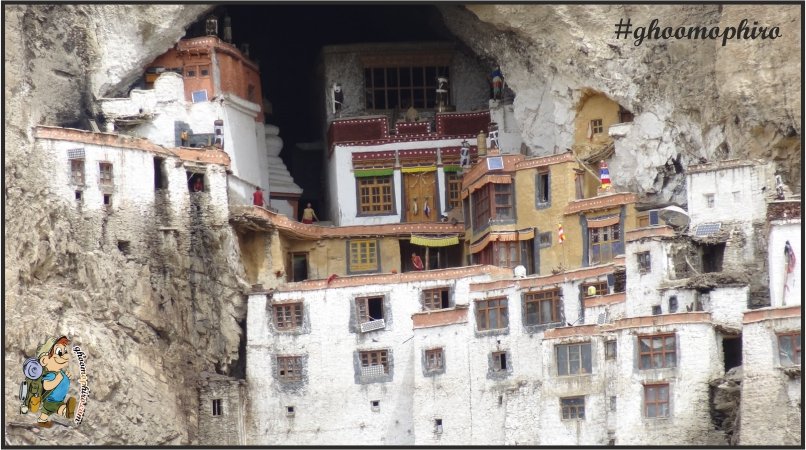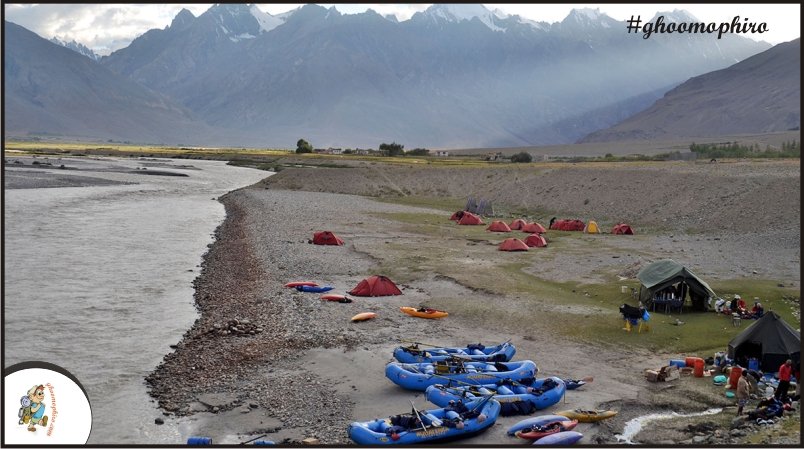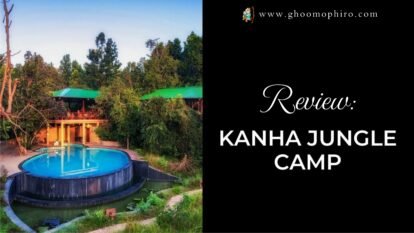Zanskar Valley, the remote corner of Ladakh is worth visiting for adventure lovers
Posted on August 1, 2017 by Ghoomophiro

Covering an area of 7,000 sq km and with a height that ranges between 3,500-7,000 meters, Zanskar is a semi-desert high-altitude tourist destination of Ladakh region. It mainly consists of the part that is situated along the rivers of Doda and Lungnak, the main tributaries of Zanskar River. Despite being one of the parts of Jammu and Kashmir, the valley has striking natural vistas.
Zanskar is bounded by the Himalayan Range in the southwest. That is why it is known as a ‘place wrapped with snow-clad peaks’. Though the place is known for trekking, rafting, and mountaineering, there are other tourist attractions too. Some of the famous attractions in Zanskar are Drang Drung Glacier, Phuktal Monastery, Zangla, Karsha Monastery, Zongkhul, Stongdey Monastery and Panikhar.
How to Reach
There is a weekly bus service that runs from Leh in Ladakh to Padum in Zanskar with a one night halt in Kargil. If seats are available, one can decide to travel to Zanskar valley in this bus. In the morning, buses commence from Kargil for Sankoo and Panikhar, villages in the Suru valley.
Nimu
Nimu, at an elevation of 3150 meters, is a village that is built along the bank of River Indus and is the end point of the river rafting activity in the Zanskar region and the beginning point of river rafting on the Indus River.
Drang Drung Glacier
The source of River Stod, the Drang Drung glacier, has an approximate length of 23 kilometers and an elevation of 4,780 meters. It is the largest glacier in the Ladakh- Zankskar region that is built near the Pensi La mountain pass.
Phuktal Monastery
Constructed by Gangsem Sherap Sampo in the 12th century, the Phugtal Monastery is one of the major tourist attractions in the Zanskar region because of its distinctive architectural work and construction. It has a library, prayer rooms and also houses 70 monks.
Zangla
A home to 150 lamas, the Zangla Monastery situated in the village of Tsa-zar near Zangla is famous for its collection of wall paintings. Further, Zangla is a prominent stopover on the Padum-Stongdey-Zangla-Karsha-Padum trip.
Zongkhul
The Zongkhul Monastery belongs to the Drugpa sect and was constructed by Naropa, who is believed to have meditated for 2 years at one of the caves in the monastery. It appears on the Padum-Kishtwar trek route and encompasses the great piece of artwork that belongs to the ancient age. It is home to 15 monks and has precious artifacts like the ivory image of Samvara, texts containing the spiritual songs, a crystal stupa, and thangkas. One of the murals of Zhadpa Dorje, which is 300-years-old, is quite splendid.
Stongdey Monastery
The Stongdey Monastery was constructed by Naropa’s disciple in the 11th century. It is 20 kilometers away from Padum and has over 60 monks. Further, it has seven temples that exhibit several artistic works. Nonetheless, the Gustor Festival, which is held in the eleventh month of the Tibetan calendar, is hosted in the Stongdey Monastery.
Panikhar
On the way to Zanskar from the Suru Valley, Panikhar is one of the most amazing inhabited areas in the Trans-Himalayan region. It is a refreshing stopover on the way to Padum. From the nearby Parkachik La one can enjoy the wide view of the glacier situated north face of the mighty Nun-Kun Mountain. Further, Panikhar is a hub for the trekkers and hosts a number of trekking routes.
Karsha monastery
The Karsha Monastery, which is also known as Karsha Chamspaling, was constructed by Phagspa Shesrab. The Karsha Monastery is the biggest and one of the most renowned pilgrimages in the Zanskar region that have ancient rock architectural works like the Avalokiteshvara temple, which widens the era of Rinchen Zangpo through its wall paintings. The monastery has a number of shrines and relics of Dorje Rinchen. It is also a resident to more than 100 monks. The area is also dotted with other monasteries like the Khagsar Monastery, Phagspa Monastery, and Purang Monastery.
Travel Tips
Zanskar remains cut off from rest of the world between November to May due to heavy snowfall and it is best visited between June to September when the road is free from snow.
On your excursion to Zanskar Valley, tourists could find accommodation along the way in campsites and homestays. Once you reach Kargil via Zozi La Pass, you could cover places such as the Kargil War Memorial at Drass and Tiger Hill View from a roadside Dhaba while relishing your lunch. While at Padum, you can cover places such as Sani, Stongdey and Karsha monasteries, Zang La Fort.
While at Zanskar Valley, spend the night by the river in the lap of the Greater Himalaya mountains and leave in the next morning.
The beauty of the Zanskar landscapes will change your definition of beautiful forever. It is an admired destination for the adventure lovers who board on to the adrenaline rushing journeys in trans-Himalayas every year.












No doubt ladakh is adventures place. Thanks for your sharing.
I found your site from Google and I need to claim it was a wonderful find.
Thanks!